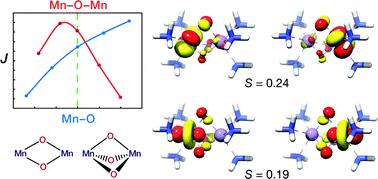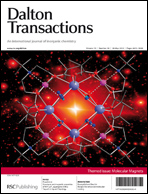Theoretical magnetochemistry of dinuclear manganese complexes: broken symmetry density functional theory investigation on the influence of bridging motifs on structure and magnetism†
Abstract
A systematic study of the magnetic coupling in homovalent (

- This article is part of the themed collection: Molecular magnets

 Please wait while we load your content...
Please wait while we load your content...